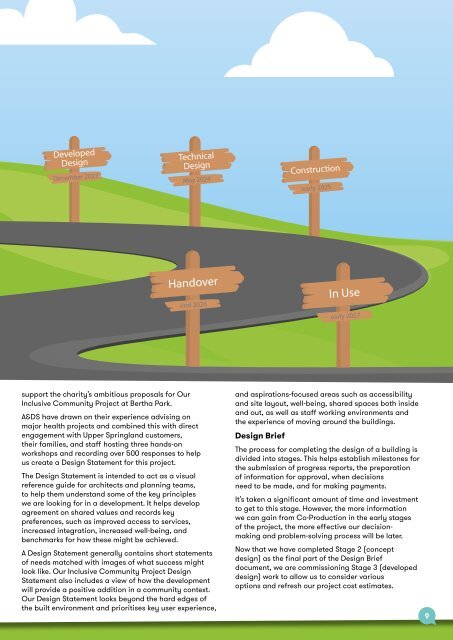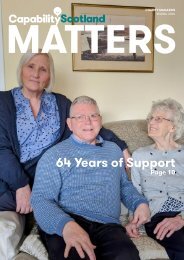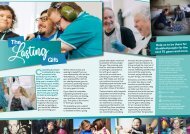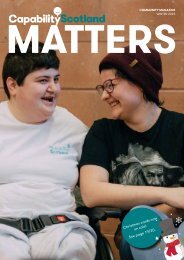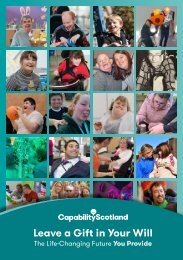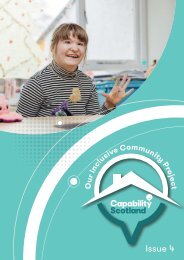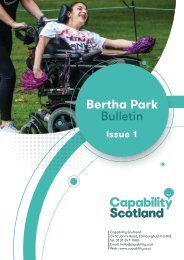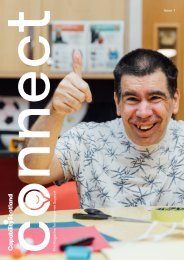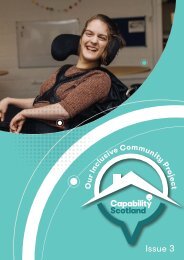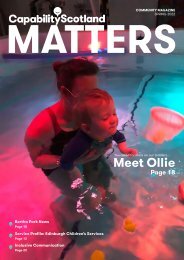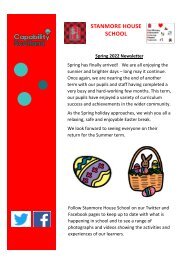Issue 4 - Spring 2023
You also want an ePaper? Increase the reach of your titles
YUMPU automatically turns print PDFs into web optimized ePapers that Google loves.
Developed<br />
Design Technical<br />
Design<br />
December <strong>2023</strong><br />
May 2024<br />
Construction<br />
early 2025<br />
Handover<br />
end 2026<br />
In Use<br />
early 2027<br />
support the charity’s ambitious proposals for Our<br />
Inclusive Community Project at Bertha Park.<br />
A&DS have drawn on their experience advising on<br />
major health projects and combined this with direct<br />
engagement with Upper <strong>Spring</strong>land customers,<br />
their families, and staff hosting three hands-on<br />
workshops and recording over 500 responses to help<br />
us create a Design Statement for this project.<br />
The Design Statement is intended to act as a visual<br />
reference guide for architects and planning teams,<br />
to help them understand some of the key principles<br />
we are looking for in a development. It helps develop<br />
agreement on shared values and records key<br />
preferences, such as improved access to services,<br />
increased integration, increased well-being, and<br />
benchmarks for how these might be achieved.<br />
A Design Statement generally contains short statements<br />
of needs matched with images of what success might<br />
look like. Our Inclusive Community Project Design<br />
Statement also includes a view of how the development<br />
will provide a positive addition in a community context.<br />
Our Design Statement looks beyond the hard edges of<br />
the built environment and prioritises key user experience,<br />
and aspirations-focused areas such as accessibility<br />
and site layout, well-being, shared spaces both inside<br />
and out, as well as staff working environments and<br />
the experience of moving around the buildings.<br />
Design Brief<br />
The process for completing the design of a building is<br />
divided into stages. This helps establish milestones for<br />
the submission of progress reports, the preparation<br />
of information for approval, when decisions<br />
need to be made, and for making payments.<br />
It’s taken a significant amount of time and investment<br />
to get to this stage. However, the more information<br />
we can gain from Co-Production in the early stages<br />
of the project, the more effective our decisionmaking<br />
and problem-solving process will be later.<br />
Now that we have completed Stage 2 (concept<br />
design) as the final part of the Design Brief<br />
document, we are commissioning Stage 3 (developed<br />
design) work to allow us to consider various<br />
options and refresh our project cost estimates.<br />
9


